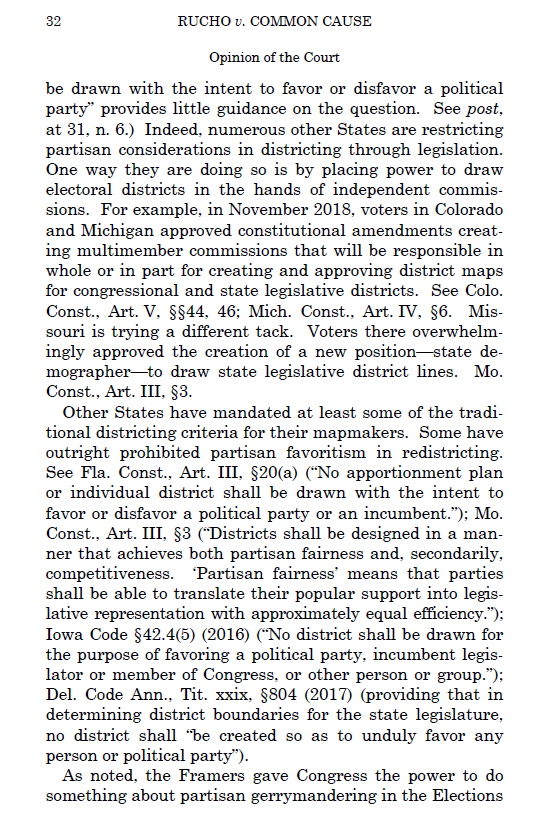In Common Cause v. Rucho, Chief Justice Roberts pointed to the significant reforms to redistricting that had been taking place in the states, as a way of asserting that the federal courts and constitutional doctrine were not the only avenues to address the issue. As we are now seeing with the prospect of mid-decade redistricting, a state-by-state approach might turn out to be an unstable equilibrium.
If red states like Texas go ahead with mid-decade redistricting, and blue states like CA and NY decide to adopt measures that respond in kind, there will now be questions about what will happen after the 2030 Census and round of redistricting. Will the states with commissions go back to using them or will they attempt to take measures, such as new voter initiatives, to repeal the reforms they had enacted?
This collective action dynamic is what led Congress to pass the Apportionment Act of 1842, which required all states to use single-member districts to elect members of Congress. Before that, some states wanted to use single-member districts, other states wanted to use at-large elections. But “state choice” was an unstable equilibrium. As a partisan matter, states that used single-member districts weakened themselves in Congress compared to those that used at-large elections. If a state using single-member districts had five representatives, it might end up with a 3-2 delegation in partisan terms (say a net of 1 seat for Party A). If a smaller state with only three representatives used at-large elections, it would be likely to have all three represent the same party (so at net of 3 for, say, Party B). So even the first state would be driven to using at-large elections, even if it preferred to use single-member districts.
That’s why Congress imposed a uniform, national requirement. In the redistricting context, such a uniform, national requirement to constrain partisan gerrymandering could have come from the Court or could come from Congress. And absent a nationally uniform requirement, it’s unclear how “free” states will be as a practical matter to choose to constrain partisan gerrymandering. Absent a national solution, we will see how much unraveling of prior state reforms takes place, both in the short term and in the run-up to the 2030 round of redistricting.
Disclosure: I represented Common Cause in Common Cause v. Rucho.
